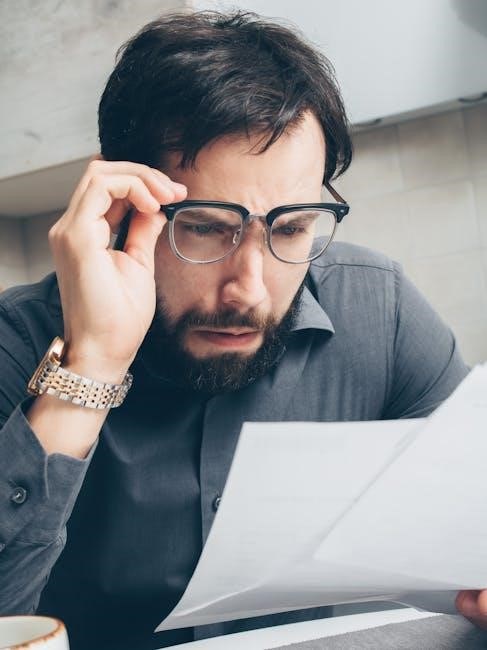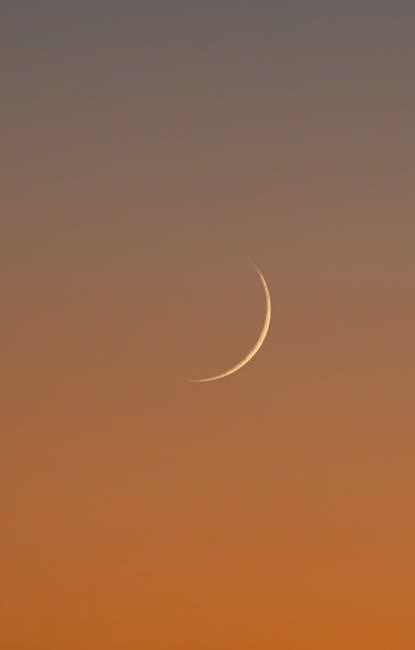Ketogenic bodybuilding presents a novel approach for natural athletes, focusing on fat adaptation and enhanced performance. Recent research highlights potential benefits for both aerobic and anaerobic exercise.
This dietary strategy, gaining traction since 2022, explores utilizing ketones for fuel, potentially improving body composition and offering an alternative for muscle gain.
It’s a low-calorie regime, suitable for athletes aiming to improve body composition, and is recognized for its weight loss effects, impacting muscle performance positively.
What is a Ketogenic Diet?
A ketogenic diet is a high-fat, very low-carbohydrate meal plan forcing the body to switch from glucose to ketones as its primary fuel source. This metabolic shift, known as ketosis, is central to its effects.
Popular since recent years, it’s associated with weight loss and relief from various diseases, but increasingly explored for athletic performance. It’s a low-carbohydrate, high-fat (LCHF) diet, impacting fat utilization within muscle tissue.
Essentially, it’s a dietary approach that drastically reduces carbohydrate intake and replaces it with fat, triggering a unique physiological response.
The Appeal for Natural Athletes
For natural athletes, the ketogenic diet offers a potential edge by enhancing fat utilization and aerobic capacity. It’s an alternative to improve strength performance and body composition without relying on artificial aids.
The diet’s ability to delay fatigue appeals to endurance runners, while its impact on muscle metabolism attracts strength-focused athletes. It can be a low-calorie regime for body composition improvement.
Ultimately, it presents a unique approach to fueling performance and achieving physique goals through metabolic adaptation.

Understanding Ketosis and its Benefits for Muscle Growth
Ketosis shifts the body’s primary fuel source to fat, impacting energy production and potentially enhancing endurance. FGF21 plays a key role in this metabolic adaptation process.
This metabolic state can improve aerobic and anaerobic performance, offering benefits for muscle growth and overall athletic capacity.
How Ketosis Impacts Energy Production
Ketosis fundamentally alters energy production, shifting from glucose to fat and ketone bodies as the primary fuel source. This process, facilitated by hormonal changes, enhances fat utilization within muscle tissue.
The body efficiently converts fat into ketones in the liver, providing a sustained energy supply, potentially delaying fatigue during prolonged exercise. This adaptation is crucial for endurance athletes and impacts anaerobic performance too.
FGF21 regulates glucose and fat metabolism, optimizing energy balance during periods of carbohydrate restriction, supporting consistent energy levels for training.
The Role of FGF21 in Ketogenic Adaptation
FGF21, primarily produced by the liver, is a key hormone in ketogenic adaptation, regulating fat and glucose metabolism. It plays a vital role in energy balance, especially during fasting or carbohydrate restriction, common in keto diets.
This hormone enhances the body’s ability to utilize fat for fuel, promoting efficient energy production and supporting the shift towards ketosis. FGF21’s influence is crucial for maintaining stable energy levels.
Its regulation helps athletes adapt to the metabolic changes, optimizing performance and mitigating potential side effects during the initial stages of a ketogenic lifestyle.
Macronutrient Breakdown for Bodybuilding on Keto
Strategic macronutrient ratios are vital for keto bodybuilding success. Prioritize adequate protein intake, coupled with high fat consumption, and carefully timed carbohydrate restriction for optimal results.
Balancing these elements supports muscle mass, energy levels, and overall adaptation to the ketogenic state, crucial for natural athletes.
Calculating Optimal Protein Intake
Determining protein needs on keto is crucial for preserving and building muscle. While traditional recommendations suggest 1.6-2.2g/kg of bodyweight, keto athletes may benefit from the higher end of this range.
Prioritize sufficient protein to mitigate muscle protein synthesis concerns often associated with lower carbohydrate intake; Individual adjustments are key, considering training intensity and individual metabolic responses.
Ensure adequate intake to support recovery and adaptation, especially during the initial phases of ketogenic adaptation, maximizing lean mass potential.
Strategic Fat Consumption
Fat is the primary fuel source on a ketogenic diet, constituting 70-80% of total calories. Prioritize healthy fats like avocados, olive oil, and fatty fish to support hormonal function and overall health.
Focus on incorporating fats that enhance muscle recovery and energy utilization. A low-carbohydrate, high-fat diet promotes fat utilization within muscle tissue, improving aerobic capacity.
Strategic fat intake is vital for optimizing performance and achieving desired body composition changes.
Carbohydrate Restriction and Timing
Strict carbohydrate restriction, typically below 50 grams daily, is crucial for inducing and maintaining ketosis. Timing carbohydrate intake around workouts, via Targeted Ketogenic Diet (TKD), may benefit performance.
However, current evidence suggests keto is suboptimal for bulking, and initial side effects are expected. Careful carbohydrate cycling can potentially mitigate these challenges, optimizing energy levels.
Prioritize nutrient-dense sources if incorporating carbs, and monitor ketone levels to ensure metabolic state.
Ketogenic Bodybuilding vs. Traditional Bodybuilding
Comparing muscle protein synthesis, keto bodybuilding differs from traditional approaches, potentially impacting strength and power. Research indicates keto can enhance fat utilization in muscle.
While keto offers unique benefits, it’s currently considered suboptimal for maximizing lean mass gains compared to conventional bodybuilding diets.
Comparing Muscle Protein Synthesis
Traditional bodybuilding prioritizes ample carbohydrates to maximize insulin secretion, driving muscle protein synthesis. Ketogenic diets, however, operate differently, potentially influencing this process.
While initial concerns suggested keto might hinder muscle protein synthesis, recent studies indicate it can still support gains, albeit potentially at a slower rate. The body adapts, utilizing ketones and available amino acids effectively.
Factors like adequate protein intake and strategic nutrient timing become crucial for optimizing muscle growth within a ketogenic framework, ensuring sufficient building blocks are available.
Impact on Strength and Power
Initial adaptation to a ketogenic diet can sometimes lead to a temporary decrease in strength and power output, often linked to glycogen depletion. However, this is frequently short-lived as the body becomes fat-adapted.
Research suggests that, post-adaptation, keto athletes can maintain or even improve strength, particularly in endurance-focused activities. The enhanced fat utilization supports sustained effort;
For powerlifters or those needing explosive strength, strategic carbohydrate refeeds may be beneficial to replenish glycogen stores for peak performance during intense training sessions.
Potential Benefits of Keto for Athletes
Keto diets enhance fat utilization, potentially delaying fatigue and improving aerobic capacity. They also offer body composition improvements and may boost endurance performance for athletes.
This approach supports sustained energy levels and can be a viable alternative for those seeking enhanced athletic capabilities through metabolic adaptation.
Improved Fat Utilization
A ketogenic diet shifts the body’s primary fuel source from glucose to fat, dramatically enhancing fat oxidation during exercise. This metabolic adaptation allows athletes to tap into substantial energy reserves, potentially delaying glycogen depletion.
Research suggests LCHF diets improve muscle’s ability to utilize fat as fuel, boosting aerobic capacity. This is particularly beneficial for endurance activities, promoting sustained performance and efficient energy expenditure throughout prolonged exertion.
Enhanced Endurance Performance
Ketogenic diets are increasingly explored for their potential to improve endurance, with studies indicating a capacity to delay fatigue during prolonged activity. By optimizing fat utilization, athletes may sustain performance levels for extended periods.
While research is ongoing, initial findings suggest keto can benefit aerobic and anaerobic performance. This adaptation allows athletes to rely on a virtually limitless fuel source, potentially enhancing stamina and reducing reliance on carbohydrate intake.
Body Composition Improvements
Ketogenic bodybuilding often leads to favorable shifts in body composition, prioritizing fat loss while preserving, and even building, lean muscle mass. This is achieved through metabolic adaptation, encouraging the body to become highly efficient at utilizing fat as its primary fuel source.
The diet’s impact on hormone regulation and improved fat utilization contributes to a leaner physique, making it a viable option for athletes focused on optimizing their body composition.

Addressing Common Concerns and Side Effects
Transitioning to keto can induce the “keto flu,” mitigated by hydration and electrolytes. Expect potential hormonal shifts initially, requiring careful monitoring and proactive prevention strategies.
The “Keto Flu” and Mitigation Strategies
The “keto flu”, a common initial side effect, arises from electrolyte imbalances and adaptation to fat as fuel. Symptoms include headache, fatigue, and nausea.
Effective mitigation involves aggressive hydration with added electrolytes – sodium, potassium, and magnesium – to replenish losses. Gradual carbohydrate reduction can also lessen the severity, easing the body’s transition.
Prioritizing adequate rest and minimizing intense training during the initial adaptation phase is crucial for successful management of these temporary discomforts.
Electrolyte Balance and Supplementation
Maintaining electrolyte balance is paramount on a ketogenic diet due to increased excretion via urine. Sodium, potassium, and magnesium are critically depleted with carbohydrate restriction.
Supplementation is often necessary; sodium intake should be increased through salting foods, while potassium and magnesium require targeted supplementation.
Addressing deficiencies proactively prevents “keto flu” symptoms and supports optimal muscle function, performance, and overall well-being during ketogenic adaptation.
Potential Impact on Hormones
Ketogenic diets can influence hormonal profiles, particularly cortisol and thyroid hormones, initially. While not definitively negative, adaptation requires monitoring;
Testosterone levels may remain stable or slightly increase in some individuals, but individual responses vary. Careful attention to caloric intake and recovery is crucial.
Prioritizing sleep and stress management mitigates potential hormonal disruptions, ensuring optimal anabolic signaling and supporting muscle growth during ketogenic bodybuilding.

Practical Tips for Implementing a Ketogenic Bodybuilding Diet
Meal planning is key, prioritizing whole foods and strategic fat consumption. Supplementation, including electrolytes, supports adaptation and performance, optimizing the ketogenic bodybuilding process.
Meal Planning and Food Choices
Strategic meal planning is paramount for success. Focus on high-quality fats like avocados, olive oil, and nuts, alongside moderate protein sources – lean meats, fish, and eggs.
Non-starchy vegetables should form a significant portion of your plate, providing essential micronutrients. Prioritize whole, unprocessed foods, and meticulously track macronutrient intake to ensure optimal ketone production and support muscle growth.
Avoid hidden carbohydrates in sauces and processed foods.
Supplementation for Keto Bodybuilding
Electrolyte supplementation – magnesium, potassium, and sodium – is crucial to combat the “keto flu” and maintain optimal hydration. Consider branched-chain amino acids (BCAAs) to support muscle protein synthesis, particularly during adaptation.
Creatine monohydrate can enhance strength and power output. Medium-chain triglycerides (MCTs) may provide a readily available energy source, but use cautiously.
Vitamin D is also beneficial.

Advanced Strategies for Keto Bodybuilding
Cyclical Ketogenic Diet (CKD) and Targeted Ketogenic Diet (TKD) offer strategic carbohydrate refeeds around workouts to potentially enhance performance and replenish glycogen stores.
These approaches aim to optimize energy levels and support intense training sessions while maintaining overall ketosis.
Cyclical Ketogenic Diet (CKD) for Performance
Cyclical Ketogenic Diet (CKD) involves strategically incorporating higher carbohydrate intake during specific periods, typically around intense training sessions. This approach aims to replenish glycogen stores depleted during workouts, potentially improving performance.
A common CKD protocol includes 5-6 days of strict keto followed by 1-2 days of higher carb consumption. This allows athletes to benefit from both fat adaptation and glycogen-fueled intensity, offering a balance between keto benefits and performance enhancement.
Careful planning is crucial to avoid disrupting ketosis for extended periods.
Targeted Ketogenic Diet (TKD) for Workout Fuel
Targeted Ketogenic Diet (TKD) allows for carbohydrate consumption around workout times, providing readily available glucose for fuel during intense exercise. This differs from standard keto, which strictly limits all carbs.
Typically, 20-50 grams of fast-digesting carbs are consumed 30-60 minutes pre- or intra-workout. This strategy aims to enhance performance without significantly impacting ketosis, offering a potential advantage for high-intensity training.
TKD requires careful carb timing and monitoring.
Is Keto Suitable for Bulking?
Current evidence suggests a ketogenic diet is suboptimal for bulking and gaining lean mass. Expect negative side effects initially, requiring prevention through careful dietary planning.
Achieving a caloric surplus on keto presents unique challenges, demanding strategic fat and protein intake for muscle growth.
Challenges of Gaining Lean Mass on Keto
Gaining lean mass on a ketogenic diet presents distinct hurdles compared to traditional bodybuilding approaches. The primary challenge lies in achieving a sufficient caloric surplus while maintaining ketosis, as carbohydrate restriction limits glycogen stores crucial for intense training.
Furthermore, protein synthesis may be initially impacted, requiring precise protein intake calculations and strategic fat consumption to support muscle growth. The body’s adaptation to utilizing fat as a primary fuel source also takes time and consistency.
Strategies for a Caloric Surplus
Achieving a caloric surplus on keto requires a focused approach, prioritizing healthy fat sources to increase overall calorie intake without disrupting ketosis. Strategic increases in fat consumption, alongside adequate protein, are essential for supporting muscle growth.
Careful monitoring of ketone levels is crucial to ensure the body remains in ketosis while gradually increasing calories. Cyclical or targeted keto approaches can also facilitate increased carbohydrate intake around workouts;

Ketogenic Diet and Muscle Recovery
Optimizing recovery on keto necessitates prioritizing sleep and stress management alongside adequate nutrition. The ketogenic diet’s impact on hormones requires careful consideration for effective muscle repair.
Focusing on these elements supports optimal recovery and adaptation, maximizing the benefits of a ketogenic bodybuilding approach.
Optimizing Recovery with Keto
Effective recovery on a ketogenic diet demands a holistic approach beyond just nutrition. Prioritizing sleep is crucial, as it’s during rest that muscle repair and hormonal balance are optimized.
Managing stress levels is equally important, as cortisol can hinder recovery processes. Ensuring adequate electrolyte intake, particularly sodium, potassium, and magnesium, is vital to mitigate the “keto flu” and support muscle function.
Furthermore, strategic supplementation and mindful attention to hormonal responses can significantly enhance recovery outcomes for the keto-adapted athlete.
The Importance of Sleep and Stress Management
Prioritizing sleep is paramount for ketogenic bodybuilding athletes, as it’s during rest that muscle repair and hormonal regulation occur. Insufficient sleep hinders recovery and can negatively impact performance.
Stress management is equally critical; elevated cortisol levels impede muscle protein synthesis and promote fat storage. Techniques like meditation, yoga, or deep breathing exercises can mitigate stress.
Optimizing both sleep and stress levels creates an anabolic environment, maximizing the benefits of a ketogenic diet for muscle growth and overall well-being.

Research and Evidence on Keto Bodybuilding
Current studies reveal mixed results; while keto improves fat utilization, its impact on muscle mass is debated. Research limitations exist, requiring further investigation into long-term effects.
Evidence suggests keto may not be optimal for bulking, but can enhance strength and body composition in resistance training participants.
Current Studies and Findings
Recent investigations demonstrate ketogenic diets can improve aerobic and anaerobic performance, potentially delaying fatigue in endurance athletes, though not necessarily providing a competitive advantage. Studies from 2022 and 2024 indicate keto’s effectiveness in enhancing fat utilization within muscle tissue.
Furthermore, research suggests keto may be a viable alternative for increasing muscle mass when coupled with a caloric surplus, while also positively impacting body composition and strength performance.
Limitations of Existing Research
Current research on ketogenic bodybuilding faces limitations, particularly regarding long-term effects and optimal protocols for natural athletes. Many studies focus on endurance performance, with less data available on resistance training and lean mass gain specifically.
Evidence suggests keto may be suboptimal for bulking, and potential negative side effects require careful management. Further investigation is needed to fully understand hormonal impacts and individual responses.

Long-Term Sustainability of a Ketogenic Lifestyle
Maintaining ketosis long-term requires consistent adherence and adaptation to individual needs. A flexible approach, considering lifestyle factors, is crucial for sustained success.
Long-term sustainability hinges on adapting the diet, ensuring it remains enjoyable and supports overall health alongside athletic goals.
Maintaining Ketosis Long-Term
Sustaining ketosis demands diligent carbohydrate restriction and consistent fat intake, alongside careful monitoring of ketone levels. Athletes must prioritize consistent food choices and strategic meal planning to avoid accidental carbohydrate creep.
Adapting to individual metabolic responses is key; some may tolerate slightly higher carb intakes while remaining in ketosis. Long-term success relies on viewing keto as a lifestyle, not a temporary fix, and embracing flexibility.
Regular assessment of body composition and performance metrics will help refine the approach and ensure continued benefits.
Adapting the Diet to Individual Needs
Personalization is crucial; metabolic responses to keto vary significantly. Athletes should adjust macronutrient ratios based on activity levels, training intensity, and individual tolerance. Some may benefit from cyclical or targeted keto approaches.
Monitoring ketone levels and body composition changes provides valuable feedback for fine-tuning the diet. Addressing potential hormonal impacts and electrolyte imbalances is also essential for long-term sustainability.
Prioritize listening to your body and making adjustments accordingly.
Monitoring Progress and Adjusting Your Approach
Regularly track ketone levels and body composition changes to assess dietary effectiveness. Adjustments to macronutrient intake are vital based on individual responses and performance.
Consistent monitoring ensures optimal adaptation and helps prevent plateaus, maximizing results.
Tracking Ketone Levels
Monitoring ketone levels provides valuable insight into ketogenic adaptation and dietary adherence. Utilize methods like blood ketone meters for precise readings, offering a quantitative assessment of ketosis.
Urine strips are a less accurate, yet convenient, option for initial tracking. Consistent monitoring helps determine optimal carbohydrate intake and identify potential deviations from the ketogenic state, ensuring maximized benefits for athletic performance and body composition.
Assessing Body Composition Changes
Regularly assess body composition to gauge the effectiveness of your ketogenic bodybuilding approach. Track metrics like body fat percentage, lean muscle mass, and circumference measurements to monitor progress.
These assessments, alongside ketone level tracking, reveal if the diet is optimizing fat utilization and supporting muscle maintenance or growth. This data-driven approach allows for personalized adjustments to maximize results.

Resources for Further Learning
Explore recommended books and websites dedicated to ketogenic diets and athletic performance. Join online communities for support and shared experiences, fostering a deeper understanding.
These resources provide valuable insights, helping you navigate the nuances of keto bodybuilding and optimize your results effectively.
Recommended Books and Websites
Delve into “The Keto Diet” by Leanne Vogel for a comprehensive guide, and explore Diet Doctor’s website (dietdoctor.com) for recipes and science-backed articles. Examine research on PubMed (pubmed.ncbi.nlm.nih.gov) for current studies.
Consider “Keto for Athletes” by Steve Phinney and Jeff Volek, offering insights into performance optimization. Websites like Perfect Keto (perfectketo.com) provide supplemental information and product reviews.
These resources offer a blend of practical application and scientific understanding, crucial for a successful ketogenic bodybuilding journey.

Keto Bodybuilding – A Viable Option?
Ketogenic bodybuilding emerges as a potentially viable, though nuanced, strategy for natural athletes. While not optimal for rapid bulking, it offers benefits in fat utilization, endurance, and body composition.
Current research suggests it’s a promising alternative for strength performance, but long-term sustainability requires careful monitoring and adaptation. Addressing the “keto flu” and electrolyte balance is crucial.
Ultimately, success hinges on individual response, diligent tracking, and a well-planned approach.


























































































